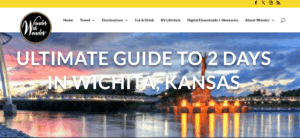18 campus tour tweaks that win over students
Angel Pérez, CEO of NACAC, recently wrote in The Chronicle about the essential role of hospitality in college admission, and he shared one of my favorite quotes that I often pass along to EAB partners:
“People will forget what you said, they will forget what you did, but they will always remember how you made them feel.” (Thanks, Maya Angelou.)
Angel also encouraged enrollment leaders, especially those in senior roles, to experience the student journey firsthand, from inquiry to enrollment to orientation. That idea is at the heart of today’s post.
In my role with Enroll360, I’ve toured hundreds of campuses. And while every institution has its strengths, there are some consistent opportunities to elevate the tour experience. So, let me start with a simple question:
When was the last time you took your own campus tour?
Campus tours hold enormous potential. Done well, they create emotional connection, spark belonging, and influence enrollment decisions. Below are 18 practical tips to help you audit and enhance your campus visit experience this summer. Don’t underestimate them. These small changes can make a huge impact.
Registering for the Tour
1. Move beyond maps.
Many institutions still use confirmation pages and emails to share little more than directions and parking permits. But the moment someone registers is a prime opportunity to build anticipation. Consider sharing articles on local spots from travel blogs, sample itineraries, restaurant recommendations, or even a digital welcome guide highlighting local favorites. Families already have GPS. What they need is a reason to get excited.

Travel blog example with local recommendations for Wichita, Kansas
2. Set expectations about campus energy.
If your campus is quieter due to finals, summer break, or other downtime, be upfront about it. Even renaming the event title from “Campus Tour” to “Summer Tour” helps set the right tone. While not every family can schedule flexibly, giving them a sense of when the campus feels most vibrant helps them plan and helps you make the best possible impression (you might remember this tip from my Admitted Student day blog).
3. Keep the experience to two hours.
Between info sessions and walking tours, aim for no more than two hours total. Attention tends to dip beyond that point. End the tour while visitors are still engaged, and they’re more likely to linger on their own to explore further. That lingering is often when the magic happens.
The Tour Script
4. Avoid double introductions.
If your info session includes introductions, don’t repeat the exercise at the start of the tour. It feels redundant and can frustrate families. Instead, let your guide take the lead and make it more natural during the walk.
5. Personalize as you go.
The best guides weave in what they’ve learned about students throughout the tour:
“Hey, Jordan… you mentioned pre-med. This is where our health sciences students start their labs.”
It doesn’t have to be elaborate. Just small touches that show you’re listening.
6. Embed a theme.
Start with a theme, ideally drawn from your institution’s mission, values, or culture. At Tulane, where I served as Director of Admission, our motto was “Not for oneself, but for one’s own.” Our best guides would introduce that right at the beginning: “You’ll see this theme pop up a few times today.” Then, when at the business school, you’ll hear them say “here’s where that theme of service to others relates to the business school where we do pro bono financial planning for nonprofits” for example. It sticks.
7. Prompt storytelling in your script.
Build space in your scripts for personal stories. You can simply add a section that states [Insert personal story here].
That simple prompt reminds guides to go beyond facts and connect emotionally with their audience. Most visitors won’t remember stats, but they will remember a great story.
8. Show outcomes through real examples.
Rather than stating that “45% of students land jobs within six months,” show what success looks like: “My roommate just started working at NASA.”
Use LinkedIn to gather stories. Invite Career Services to help with guide training. Build a story bank. Make the outcomes real.
9. End with a callback.
The best tours, like the best presentations, come full circle. If you started with a theme, return to it at the end. That emotional callback leaves a lasting impression.
The Tour Experience
10. Rethink paper handouts.
Most students don’t want to carry a packet of materials during a walking tour, especially in warm weather. Consider distributing materials at the end instead. And if you’re offering a giveaway, go with laptop or water bottle stickers. Students love them and they’re a great way to extend your brand.
11. Align the tour with the info session.
Make sure your messaging is consistent across touchpoints. Do the tour and session reinforce the same themes and values? Even having guides sit in on a session during training can help ensure a more seamless experience.
12. Audit the physical flow.
Is the route manageable? Are there indoor stops to break up long walks? Are bathrooms available? Is the environment clean and welcoming? These are subtle factors that shape the overall feel of the visit. Consider pausing mid-tour to show a wayfinding map and orient visitors, especially if your campus is large or spread out.
13. Review for accessibility and inclusion.
Would the experience feel welcoming to someone using a wheelchair? A first-gen student? A family with same-sex parents? Walk your tour with these perspectives in mind and look for ways to be more inclusive and affirming.
14. Avoid overused talking points.
Mentioning blue light phones, “Hogwarts-style” dining halls, or how “you only need six people to start a club” won’t stand out; they’ve been heard on every other campus. Ask current students what felt fresh or repetitive during their visits to other schools. Their feedback can help refine your message.
After the Tour
15. Create a photo-worthy moment.
Think about how the tour ends. Is there a spot where students and families want to snap a photo? Big campus letters, scenic views, or branded murals work well. Rice University’s “RICE” letters (below) are a great example. They’re hard to miss and even harder not to post.

16. Add a handwritten thank-you.
This small gesture goes a long way. A quick note from a tour guide or admission staffer makes the experience feel personal and memorable.
17. Use feedback in real time.
Comment cards (digital or paper) are only helpful if they’re reviewed and acted on. If a guide gets great feedback, tell them. If something didn’t go well, coach them before the next tour. Tools like ChatGPT can summarize feedback quickly so you can respond right away.
The Case for ChatGPT: Leveraging AI for Admissions Tasks
18. Follow up with intention.
What happens after the visit? Make sure your follow-up is timely, clear, and action oriented. These families are engaged, so keep the momentum going. If you’re an Enroll360 partner, this is when they move into the Cultivate campaign. The transition should feel seamless. If you need assistance with this step, I recommend reaching out to your Strategic Leader for support.
Your campus tour is more than a walkthrough; it’s a moment to create connection, emotion, and excitement. Implementing even a few of these strategic updates can make your visit program more memorable, inclusive, and impactful. Happy touring!

More Blogs

What enrollment leaders can learn from Alabama’s statewide direct admissions program

Is your yield rate okay?
